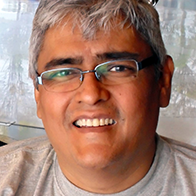Last week, it was time to visit the doctor again.
This time, however, it was to a government hospital in Kuala Lumpur where I hadn't been to in a long while.
The trip turned out to be a success for me personally. I managed to get the health assessment test and document I required from my doctor in order to go to the next level for an official procedure.
But as a disability activist, I came across some good and bad experiences which are worth mentioning in my column today.
I hope that by highlighting them here, it will serve as good pointers for improvement. This, not only for the particular hospital I went to last Friday, but also to all healthcare outfits throughout the country when it comes to patients' care and providing for their special needs.
First the good news.
The security guards whose job it is to coordinate traffic in the hospital truly surprised me.
All the disabled car parking slots (more than a dozen of them) were totally taken up by handicapped drivers that day.
I could tell the vehicles authenticity. Not only did all of them have a registered wheelchair logo sticker pasted on their front windscreens as well as on their vehicles' boots in the back; but upon a closer inspection, I even noticed the special adaptations fitted onto their steering wheels.
And the fact that there were so many of them on a Friday was not surprising. It was, after all, the rehabilitation clinic day for wheelchair users, those who used crutches, walkers and so on.
Fortunately I went along with an able-bodied friend to assist me.
Luckily we spotted an awkward spot where we could park. But just as we were about to, we were approached by a security guard to stop us.
Now here's the thing.
Encounters like this often turn out to be hostile with the guard usually telling me to get lost, make another round back or a dozen trips (he doesn't really care) – as long as he follows the instructions of his higher ups to stop me from parking there – whether handicapped or not.
But this guard was awesomely different.
Not only did he very politely explain to me why I couldn't park at the spot (blocking bigger vehicles like vans and others from getting through), he immediately buzzed to another security personnel on his walkie-talkie and directed me to another parking place.
"Go on, sir. He is already waiting for you! I've already given him the number plate of your car," he chirped like an early morning beautiful bird.
I disbelievingly drove around the bend to where he pointed at.
And lo, and behold! I was greeted at once by another security – still on his walkie-talkie with the first guy. He was a bubbly and chirpy fellow too. He promptly showed me where to park my car.
Encountering positive persons like these, even before one enters a hospital, is enough to make any patient who feels sick and grumpy feel much better already before seeing a doctor.
I was sure that the hospital administration was behind the training of these boys from heaven. In fact, every staff from the reception desk in the hospital right up to the specialists' department I encountered were also very polite and helpful.
It was the kind of reaction you would expect from a private hospital rather than a government one. So bravo guys!
And now the problem.
It was regretful to note that the hospital had not given much thought to the disabled car parks in their premises.
For one, they are not sheltered car parks.
Imagine the beating the elements can wreak on the patients with disabilities who park there?
Umbrellas are no good when you are trying to get in and out of your cars in a wheelchair, crutches and walking stick.
Heck, you can't even get out of your car if it starts raining just as you arrive at the hospital! And what about getting to your car in a thunderstorm?
And let's not let "a perfect sunny day" deceive anyone.
The temperatures in vehicle can turn warm into nasty within a few minutes. The "oven-hot" seats can burn nasty blisters and holes into the skin of paralysed persons without them realising it until it gets infected and becomes life-threatening afterwards.
All disabled car parking areas should be next to the entrances of hospitals. Walking with walking aids like walker frames, crutches or quad sticks can be tantamount to climbing mountains for the people who move around by such means.
Thus it would be most uncaring and even cruel, to say the least, to place parking bays for the physically disabled some distance away from the building's entrance.
Sometimes, they even have to cross internal roads in order to get into the hospital building like the one I visited.
Come on guys at the top, surely you can do much better than this? – March 23, 2015.
* This is the personal opinion of the writer or publication and does not necessarily represent the views of The Malaysian Insider.


Comments
Please refrain from nicknames or comments of a racist, sexist, personal, vulgar or derogatory nature, or you may risk being blocked from commenting in our website. We encourage commenters to use their real names as their username. As comments are moderated, they may not appear immediately or even on the same day you posted them. We also reserve the right to delete off-topic comments